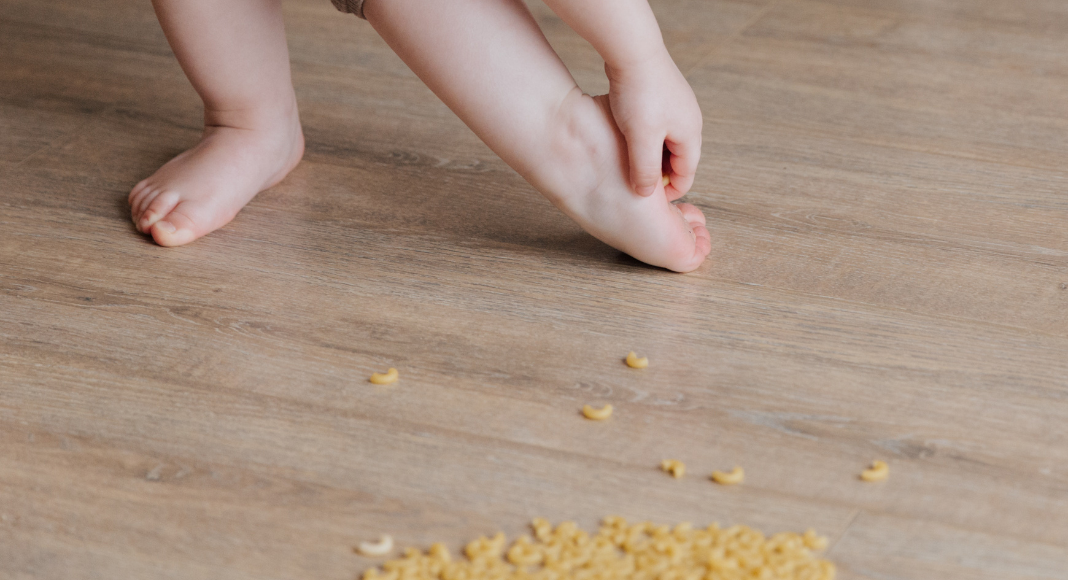We all have a unique and complex sensory makeup, which makes certain things appeal more or less to us. As moms, we all also have moments where we ask ourselves why our children want to do things a certain way.
Having a sensory-sensitive child can mean asking this question all day, every day.

The sensory system is comprised of more than the sight, sound, smell, taste, and touch we learn about growing up. When it comes to sensory-sensitive kids, it is important to also gain an understanding of the vestibular (motion) and proprioceptive (pressure) systems.
First, it’s worth noting that having a sensory-unique child does not automatically mean your child has ASD. Sensory challenges come in many shapes and forms. At the end of the day, it’s important to remember that, even if your child does receive a diagnosis, they don’t become their diagnosis. It doesn’t change who they are, and it won’t make them get better or worse, but it can help you explore beneficial resources and understand your child to the fullest.
For my sensory-seeking and sensory-avoidant, 2-year-old daughter, sensory sensitivity, in part, means a lack of flexibility. Everything needs to be in the place she knows it to go and look the way she knows it to look. This affects everything in our day to day: the items in our home, how they’re placed, the way they’re used, our meals, and even the utensils we use to eat those meals. Everything we do involves a sensory aspect, but without sensitivities like hers, I wouldn’t have spent a moment thinking about them.
More than any toy, activity, book, or class, understanding sensory challenges is best benefited by caregivers who can offer an endless supply of patience, empathy, and deep breaths. The most groundbreaking piece for me was finding the functional purpose behind the head-scratching behavior or “tantrum” my daughter was displaying. Trust me when I promise that your child is not melting down to push your buttons. Having the insight and compassion that allowed me to understand the “why” behind the “what” was the game changer for us.
It’s taken a long road of therapies and many late nights of research, but I’ve finally begun to reach a point of understanding when it comes to my daughter.
Why is my daughter spinning in circles instead of eating her dinner? She’s feeling under-stimulated by sitting at the table and is seeking more vestibular input. Why does going to a store 15 minutes away trigger SUCH a hysterical meltdown? She’s panicked by the restraint of the car seat and feeling claustrophobic. Why, oh why, is she on the floor in tears refusing to eat after her granola bar broke in half? It tastes the same! Not to her. She’s having a visual sensory sensitivity and is struggling with object permanence and a lack of predictability. This awareness by no means makes things easy now, nor can I read her mind to any degree, but I’m incredibly grateful for how far we’ve come.
I’ll leave you with one of my favorite tips. If your child is a sensory-seeker, try to have a variety of inputs in the senses they tend to seek more. Utilize this variety and interact with this input more than usual before asking them to do tasks that are more sensory-challenging for them. Similarly, when going through an activity that is sensory-sensitive or sensory-avoidant for your child, keep a positive activity or sensory input nearby for redirection and regulation if the activity becomes too much for them.
As always, if you feel like you need additional support for your child’s unique sensory needs, consult your pediatrician and/or a local resource. You are and always will be your child’s best advocate and teacher (whether you’re intending to teach or not). Having the right support is pivotal during what can otherwise be a very challenging, and oftentimes, lonely, confusing, and misunderstood time. Now, how do you differentiate sensory reactions and regular toddler temper tantrums? Well, that’s a post for another day.












